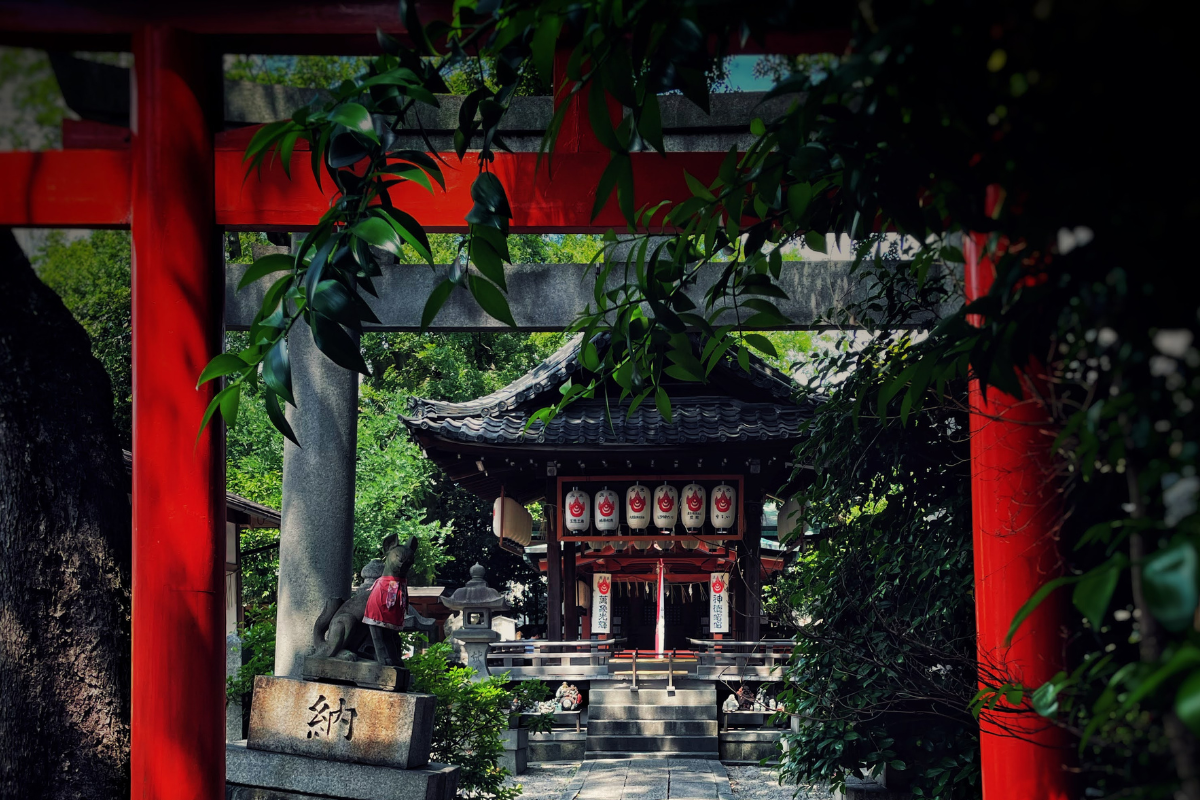A journey through Kyoto's hidden sanctuaries—where spirituality, nature, and traditional craftsmanship converge beyond the seasons.
When we think of Kyoto, images of cherry blossoms in spring, golden temples bathed in autumn leaves, and the vibrant Gion Festival in summer often come to mind. The city is deeply entwined with the seasons—and rightly so. But beyond the well-trodden calendar of famous events lies another Kyoto. One where the rhythm is slower, the silence deeper, and the heart feels freer.
1. Where Time Stands Still: Shisendo, the Poet’s Hermitage

In northeastern Kyoto lies a hidden sanctuary once home to Ishikawa Jōzan, a samurai turned poet. The hermitage he created, Shisendo, is a place where each stone, each pine tree, each wind-bent bamboo speaks softly of intention and stillness. It is not a tourist hot spot, and that is its gift. Sit by the veranda and watch the garden breathe; listen as the wind plays the bamboo pipe organ. Here, poetry is not just written—it is lived.
2. Zen in Form: Obai-in, Daitoku-ji’s Hidden Gem

Within the vast grounds of Daitoku-ji lies Obai-in, a sub-temple often missed by the average visitor. The temple's dry garden, framed by weathered tiles and moss-covered stones, invites a kind of attention that is rare in our hurried lives. Created by the legendary tea master Sen no Rikyū, it is a place to reflect on simplicity as an art. This is not the Kyoto of spectacle—it is the Kyoto of silence, restraint, and mindful design.
3. Listening to the Forest: Early Morning in Kibune

Before the day-trippers arrive, Kibune is a whisper. Mist curls along the cedar trees, and the stream that feeds Kibune Shrine carries the stories of mountains. Locals visit this place to pray not just for romance, but for clarity of heart. Walk the mossy stone steps. Let the water cleanse more than just your hands. If you listen, the forest speaks—not in language, but in presence.
4. A Pilgrimage for the Spirit: Omuro 88 and the Sacred Hills of Ninna-ji

West of central Kyoto, at the foot of Mt. Omuro, lies a lesser-known pilgrimage path—Omuro 88. Modeled after the famed Shikoku 88 pilgrimage, this modest course winds through mossy trails, hidden statues, and pockets of silence within Ninna-ji’s mountain precinct. Locals quietly walk this trail, not for fame or fitness, but to greet each small statue as a reflection of their own journey. No tour buses wait here. Only trees, light, and the steady rhythm of walking prayer.
5. Embraced by Mountains and Time: Keihoku and the Forest Shrine of Kamo

Far from Kyoto’s city lights, Keihoku is a realm where forest and tradition entwine. Nestled in deep cedar woods, Kamo Shrine stands quietly with a thatched roof weathered by centuries. There are no vending machines, no entrance fees—just the scent of moss, the sound of leaves, and the soul of Shinto in its rawest form. The villagers maintain rituals not for show, but because they are part of life itself.
6. Living History in the Thatched Village: Miyama

In the southern edge of Keihoku lies Miyama, a hamlet where thatched-roof houses still dot the valley. Unlike the more touristy Shirakawa-go, Miyama remains a lived-in community. Smoke rises from wood-burning stoves. Children play by the river. Every detail—from the woven straw roofs to the handmade gates—echoes a time when human life harmonized with nature. To visit is not to observe a museum, but to feel a rhythm that still breathes.
Bringing Kyoto Home: The Craft of Living with Meaning
These places are not merely scenic; they embody a way of living. A life where the handmade matters, where time is given its rightful place, and where beauty is lived, not displayed.
Enjoy sake with intention: In a quiet evening, a handcrafted sake cup is more than a vessel—it’s a bridge to the moment. Its texture in your hand, the chill of the drink, the way light plays on its glaze—all call you to be present.
Embrace seasonal beauty: A simple flower placed in a Bamboo Flower Basket echoes the spirit of Kyoto’s gardens. It doesn’t shout; it whispers. And that’s enough.
Live with craftsmanship: Let your everyday include a touch of soul with wooden crafts born of centuries-old techniques. They hold not only form but philosophy—of balance, respect, and care.
In Closing: Listen to Kyoto with Your Heart

Kyoto isn’t just a place to visit—it’s a presence to meet. Beyond the cherry blossoms and golden halls lies a quieter invitation. To walk slowly. To breathe deeply. To feel the craft of spirit and the spirit of craft. That is the Kyoto that endures—beyond seasons, beyond calendars, and within the soul.

